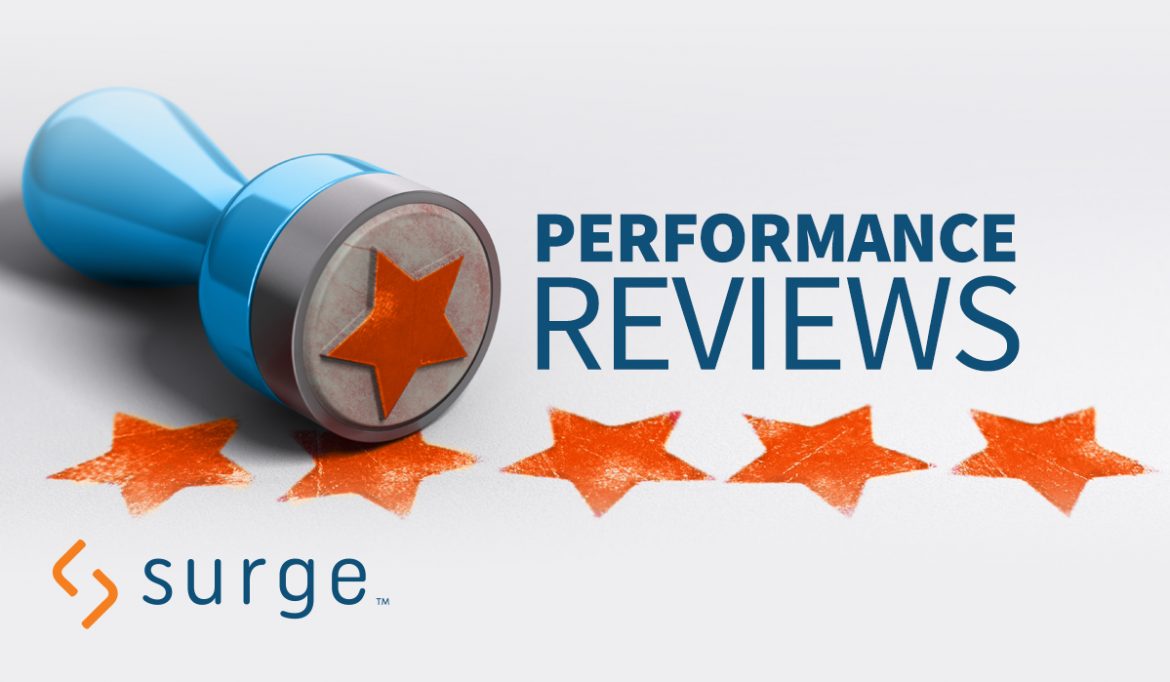Every fall, I have to get my ladder out and start the day-long process of cleaning my gutters. To save me the headache (and possibly a broken bone), one of these years I’ll invest in those gutter guards I see advertised all the time. Until then, I’ll continue this annual process.
Even though this project takes time away from one of my football weekends, I know how important it is for my house’s long-term health and its foundation. If the gutters overflow, water goes on the ground. Then in my crawl space. Then, mold forms. Now, this could take months or years to happen, but I’ll have a large and expensive problem with the house and my family’s health when it does.
The same thought process applies to conducting annual performance reviews for all the members of your team. Unfortunately, performance reviews are one of those items which often get forgotten by leaders (intentionally or unintentionally)! We’re all swamped, and now with so many people working from their homes, performance reviews often fall to the “low priority” list. As you’ll see, these conversations are critical to your business and especially to your team.
Related: Comfy Couch Conduct: Getting Used to Virtual Work
Why Conduct Performance Reviews?
Reviews are an excellent opportunity for you to have an open, candid discussion with team members and junior financial professionals. Surge recommends you conduct two reviews each year:
- Year-end review: Have a two-way conversation on what went well and where there’s room for improvement in the team member’s performance.
- Mid-year check-in: A more casual arrangement where the two parties discuss progress made on the areas of improvement from the previous year-end review.
I’ve experienced firsthand what can happen if performance reviews aren’t performed regularly. You may see something like this in your practice:
A team member (we’ll call him Joe) was having ongoing performance issues. Joe had many small performance problems that weren’t getting addressed. However, Joe’s most extensive area for improvement was to pay closer attention to detail and stop making mistakes.
Joe thought everything was fine and had no clue there were any problems. For an entire year, he’d get corrected on his errors and continue to make them the next day. Meanwhile, Joe’s conflict-avoidant leader (we’ll call her Amy) has been pulling her hair out. Joe continues to have these performance issues and she can’t figure out why he’s not getting better.
It finally got to a point where Amy had to put Joe on a six-month action plan. If Joe didn’t make a significant improvement in six months, he’d be terminated. That’s never a fun conversation to have.
Six months later, Joe was a shining star in the office! He had no idea how broad of an impact his errors were having on the practice and with clients. This entire 14 months of inefficiency could’ve easily been avoided by having a two-step performance review process in place. Dozens of hours of re-doing work, stress, and client dissatisfaction could’ve been saved.
Related: Advisor Advice: Incentivizing Talent

Simple Tips for Performance Reviews
Performance reviews aren’t that difficult to conduct. It’s similar to a client meeting: prepare, conduct, and follow-up. Here’s a quick step-by-step cadence for your next performance review:
- Schedule the meetings.
- Do an internet search for “self-appraisal form.” Find an appropriate form and customize it for your needs. Doing this may take up to 90 minutes; however, this is a one-time task. Once you’ve created it, you’ll use the form again and again.
- Send the employee the self-appraisal form and ask that they return it to you three days before your meeting.
- Before the meeting, review the employee self-appraisal form. Indicate your responses to the same questions on the form and make notes about their strengths and weaknesses.
- Then, meet for a 60-minute conversation to:
- Go through the responses to the questions and discuss where there are differences in opinion
- Share the strengths you see in them and how they should continue those strengths
- Share with them the areas where they could improve
- Show the team member how their work affects others
- Come up with a plan to correct any issues
Then, both you and the employee should sign the form. You both get a copy for your records. It’s as simple as that.
Parting Words
One last annual discussion which Surge recommends is around an employee’s career path. This is a great topic to have mid-year.
The employee can share with you what their career aspirations are. The two of you can brainstorm on things they can do to make meaningful progress toward their next position. If you decide to add this topic, ensure you give the employee ample time to prepare so you don’t catch them off-guard.
Having performance reviews will increase employee satisfaction. They want to know how you feel about their performance!
Take the first step and schedule them today. And don’t forget those gutters!
More from Surge: The New Normal Isn’t What You Think
The content is for information purposes only and not intended to be investment, tax, or legal advice. The views and opinions expressed herein belong solely to the author. Surge Business Consulting© 2020.



